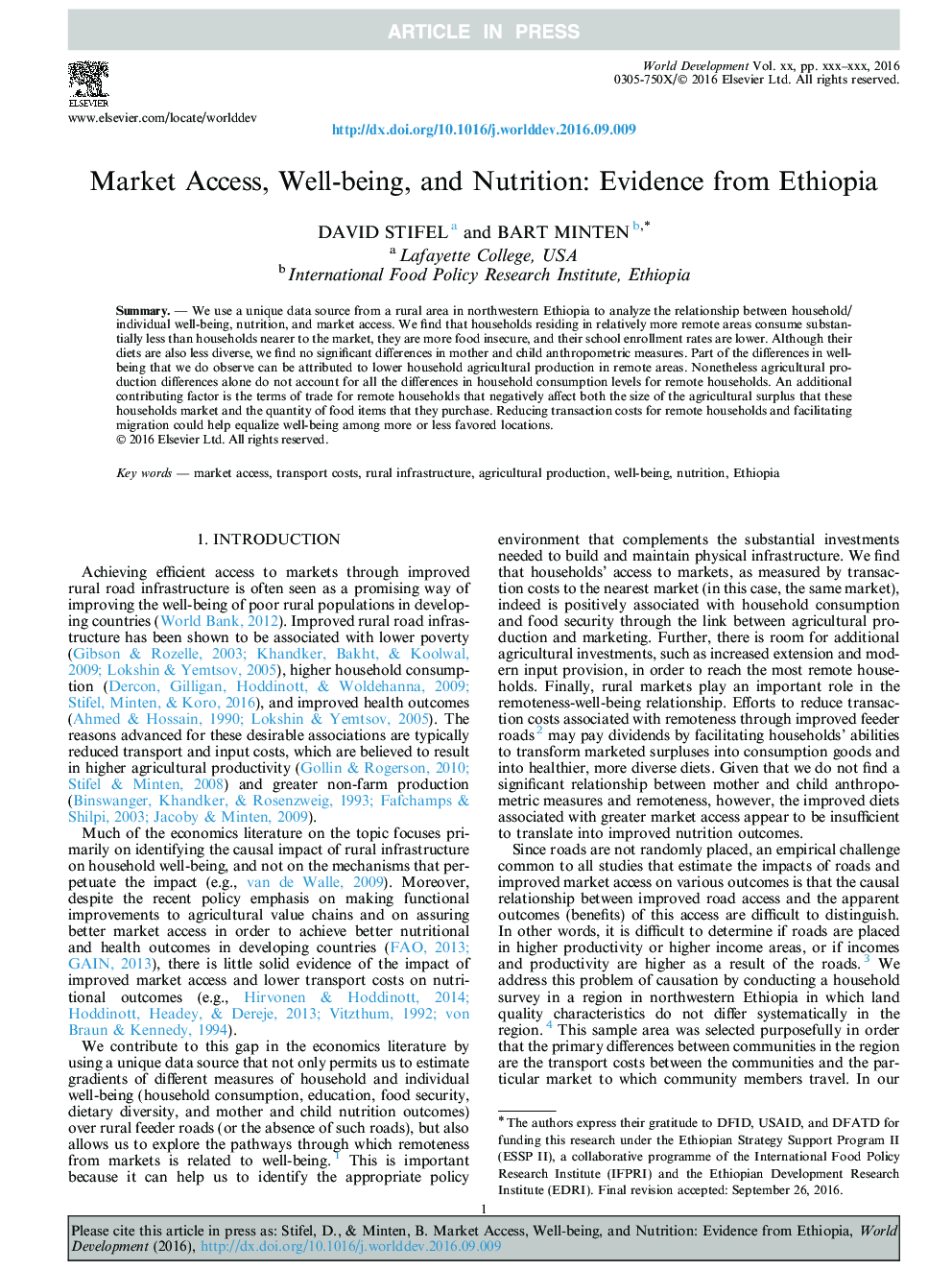| Article ID | Journal | Published Year | Pages | File Type |
|---|---|---|---|---|
| 5105251 | World Development | 2017 | 13 Pages |
Abstract
We use a unique data source from a rural area in northwestern Ethiopia to analyze the relationship between household/individual well-being, nutrition, and market access. We find that households residing in relatively more remote areas consume substantially less than households nearer to the market, they are more food insecure, and their school enrollment rates are lower. Although their diets are also less diverse, we find no significant differences in mother and child anthropometric measures. Part of the differences in well-being that we do observe can be attributed to lower household agricultural production in remote areas. Nonetheless agricultural production differences alone do not account for all the differences in household consumption levels for remote households. An additional contributing factor is the terms of trade for remote households that negatively affect both the size of the agricultural surplus that these households market and the quantity of food items that they purchase. Reducing transaction costs for remote households and facilitating migration could help equalize well-being among more or less favored locations.
Keywords
Related Topics
Social Sciences and Humanities
Economics, Econometrics and Finance
Economics and Econometrics
Authors
David Stifel, Bart Minten,
